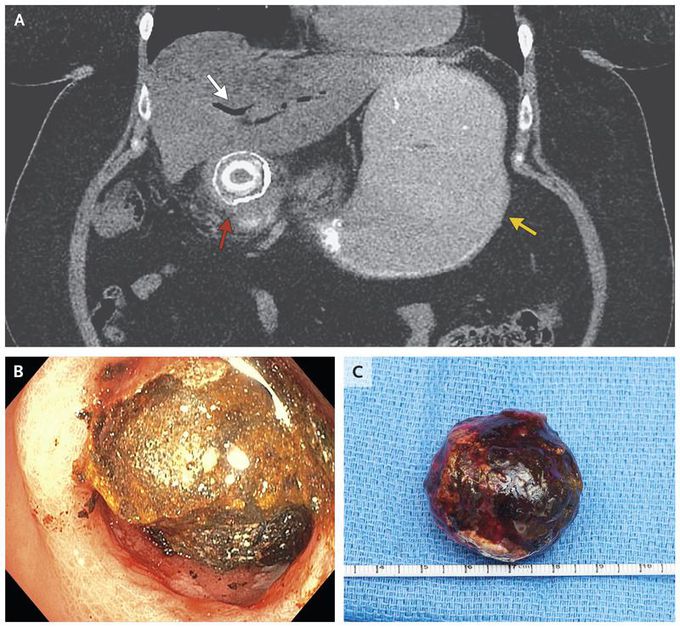


Bouveret’s Syndrome
A 57-year-old woman presented to the emergency department with a 2-week history of nausea and vomiting. During the previous month, she had had intermittent episodes of right-upper-quadrant abdominal pain. Abdominal examination revealed a distended abdomen with decreased bowel sounds and mild epigastric tenderness without peritoneal signs. Computed tomography of the abdomen (Panel A) revealed pneumobilia (white arrow), gastric distention (yellow arrow), and a gallstone obstructing the proximal duodenum (red arrow). Bouveret’s syndrome is an uncommon form of gallstone ileus that is characterized by a gastric outlet obstruction caused by impaction of a gallstone in the pylorus or proximal duodenum after its passage through a cholecystoduodenal fistula. Patients with gallstone ileus may present with radiographic findings of Rigler’s triad (i.e., pneumobilia, small-bowel obstruction, and an ectopic gallstone). Mechanical lithotripsy with endoscopic removal of the stone was attempted in the patient (Panel B); however, the procedure was unsuccessful and was complicated by a perforation of the proximal duodenum. The patient then underwent an open laparotomy for repair of the duodenal perforation and removal of a mixed gallstone, which measured 4.4 cm in the greatest dimension (Panel C). She had complete resolution of symptoms and was discharged home 15 days after admission.

